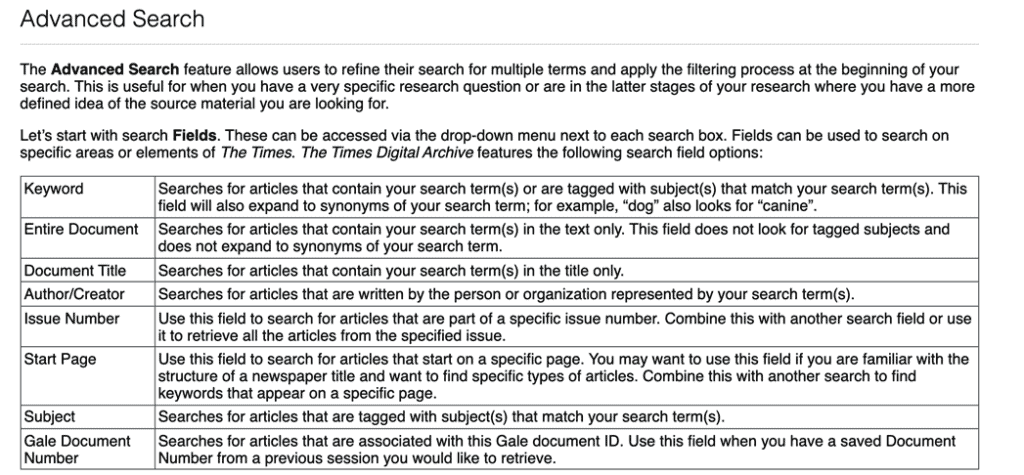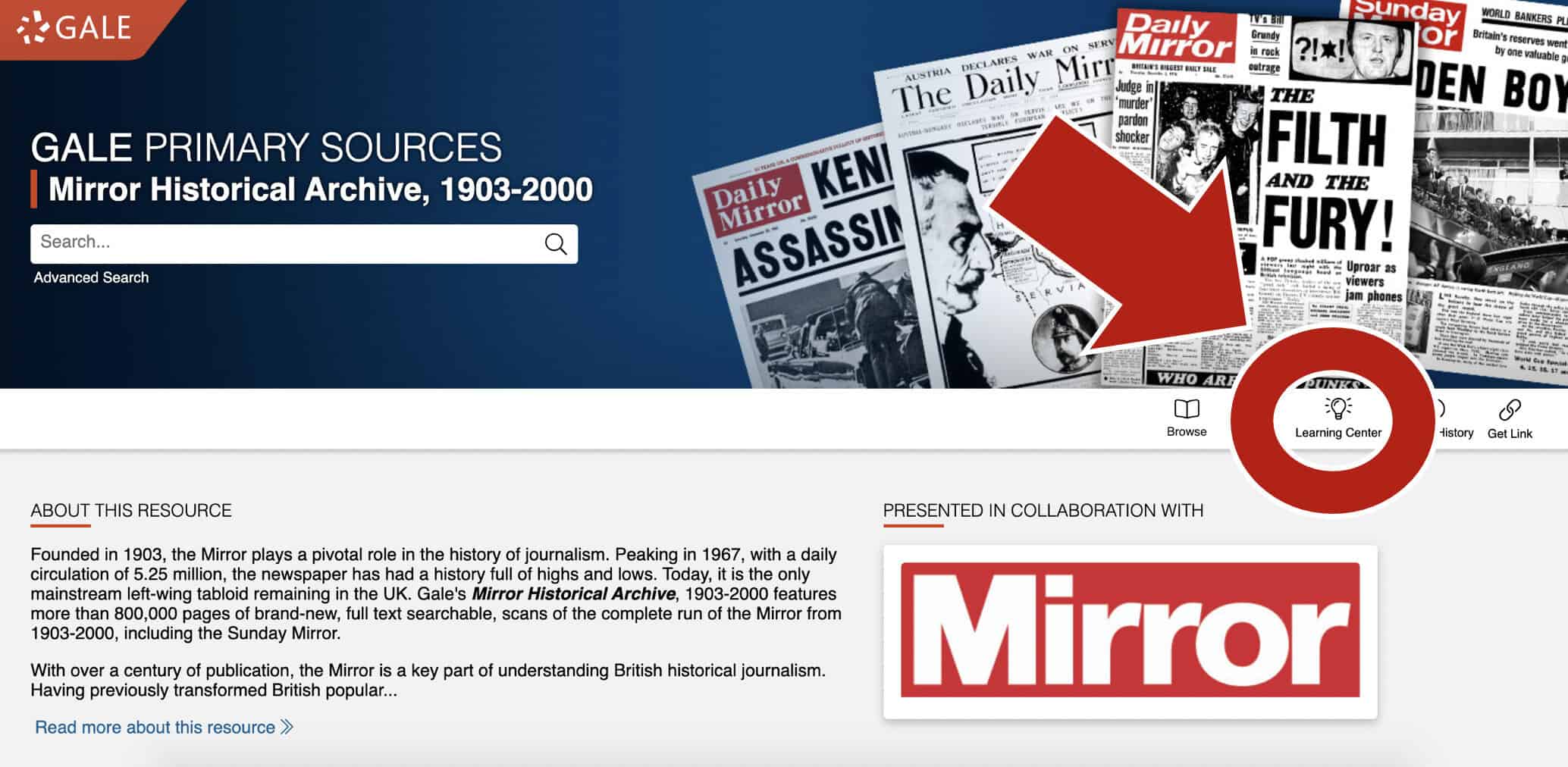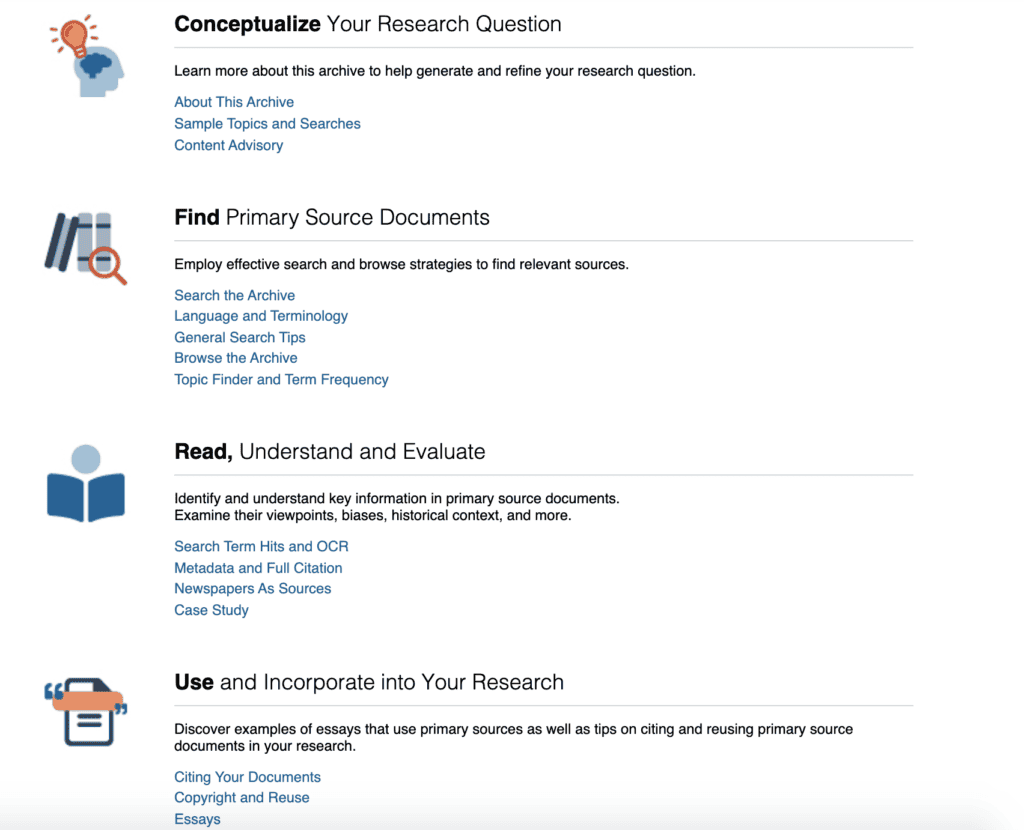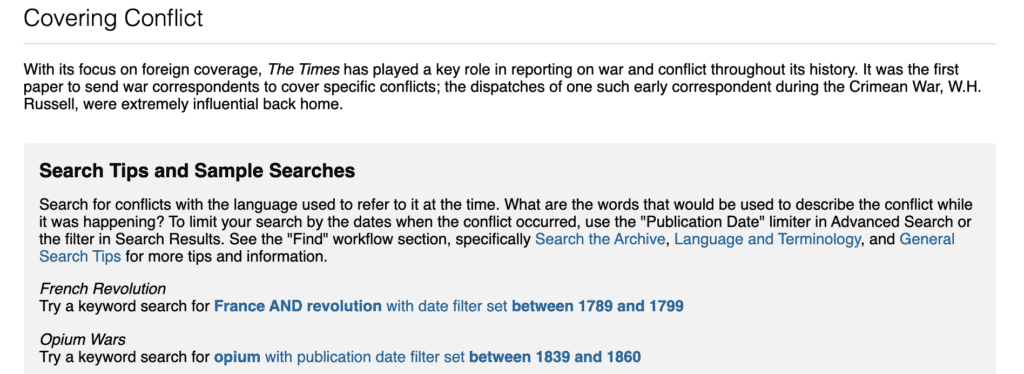│By Ellie Brosnan, Gale Ambassador at Durham University│
Primary sources are central to a range of academic disciplines but particularly History where the need to engage independently and deeply with archival material grows as students progress through their course. I remember well the way we were introduced to History and the concept of primary sources at school, making our own mocked-up documents. Emulating figures from the past, we wrote on tea-stained paper, imagining how past individuals might have felt about the events of their time. This was great fun but, as one progresses through the education system and moves on to analysing real historical documents, our engagement with History must become increasingly sophisticated and, by university-level, the quantity and complexity of the primary sources with which we must engage can become overwhelming. Plus, the breadth of questions we must ask – who wrote the source and why – on top of the broader context in which it was created, is a lot to recognise, understand and consider. This is where Gale’s Learning Centers come in! Released in October 2021, they help students get to grips with a primary source archive. Currently included in twelve of the Gale Primary Sources archives, they will later be available in all Gale archives.
Help for Undergraduates and Postgraduates
I am now in the third year of my History degree. Thinking back to how I felt in the very first term of my first year, beginning my first university essay, I know Gale’s Learning Centers would have been of great help in making me feel less overwhelmed! This is a feeling common amongst undergraduates, especially first-years, as secondary school curriculums are often tailored toward structured historical content, delivering a particular answer, and with significantly less expectation of independence. Studying History at university can be a very different experience, and students must quickly adjust. There are many ways we must deepen our engagement and analysis but the inclusion of material contemporary to the historical period about which you’re writing is often a distinctive factor that can boost your grades – but is also one of the aspects I found most difficult in the transition from school to university-level work! So these guides to studying with archival material can offer significant benefits to students in the earlier years of their degree.
Yet this does not mean that second years, third years, Masters or even PhD students would not also benefit! Especially as there are features in the Learning Centers which offer differing levels of detail and technicality, such as in the overviews of both basic and more advanced methods of searching. How to manipulate search engines to ensure that you receive the most beneficial academic papers, or primary sources suited to your interests, is something I am still working on and refining even in my third year! So these Learning Centersare certainly not just a tool for freshers; offering different levels of sophistication, they cater to a broad student audience.
Four Workflow Steps
Each of the Gale Primary Sources Learning Centers feature four key workflow steps, and there are smaller sub-sections within these steps which offer further structure and detail. The four workflow steps are: Conceptualize, Find, Read, and Use. They all offer specific advice to help users navigate the Gale Primary Sources archives.
- Conceptualize
The “Conceptualize” section offers general context to the sources, with details such as the year newspaper archives were first released, how the material was digitised and sample topics to explore within the archive. I particularly liked the sample topics sub-section which could be used to spark ideas, offering specific searches related to different thematic focuses. The example below from The Times Digital Archive Learning Center takes the topic of Conflict and explains how to specifically structure your searches to ensure the maximal amount of relevant material is retrieved. I found the Learning Centers do not just provide context to accompany the material, they actively seek to engage students in the evidence contained in these archives and prompt critical thought.
- Find
The “Find” section provides guidance on how to find the most relevant content with the platform, offering tips on how to use the search function effectively, detailing both Basic Search and Advanced Search. As suggested above, the two different outlines can help appeal to a broader range of students with varying levels of experience in searching archives meaning the Gale Primary Sources Learning Centers cater to a range of students.

- Read
The “Read” section offers more specific context as it explains how to determine details such as author, date, issue and volume number from the metadata and full citation tab. Referencing and footnoting can prove quite troublesome to undergraduate students who often have little prior experience with this. Laying out the reference information in an accessible format really helps simplify the process! I remember from my first year that citing sources was one part of writing essays which often seemed extraordinarily time-consuming, as it was so often difficult to find the information required. Significantly, many students may not immediately be aware that Gale’s archives provide source citation – so the way the Learning Center prompts students about this, as well as providing a great deal of additional information around referencing, will help to address this source of frustration for students.
- Use
Finally, “Use” offers practical advice on copyright information as well as providing academic essays that explore that particular archive. Further reading (providing greater context to contemporary evidence) is another aspect that often helps improve marks awarded for an essay. Being able to go beyond merely explaining primary material to critically engage with – analysing the background to such sources – is an aspect that our professors stress, as it means students are illustrating greater engagement with the material, and the argument of their essays. The Gale Primary Sources Learning Centers therefore do not just serve as an introduction to primary sources and archival material but rather how to pull apart and gain the most from these sources.
Support for students in a remote learning environment
It’s also worth noting that the Learning Centers offer specific benefit to remote learning environments, which is particularly useful after the struggles that many students have faced over the past couple of academic years with the COVID-19 pandemic. I remember in my first term at university I was able to access archival material by visiting specific libraries that held certain one-off collections which contained primary evidence. This was a particularly useful experience as students were able to ask those working at these institutions for their help in understanding the background and context for such sources. Whilst large university libraries did stay open during periods of COVID-19 restrictions to some degree, many of these smaller archive libraries were closed for the duration of the pandemic and such options for learning were not feasible due to such restrictions. The information offered by the Learning Centers can therefore be a helpful replacement for such experiences and aid students whenever remote learning is the core format of teaching.
If you enjoyed reading about the Gale Primary Sources Learning Centers, you might like:
- Gale Primary Sources Learning Centers – Built by Experts
- Which archives will have a Learning Center first?
- User Feedback Directs Gale’s Product Development
If you’d like more study tips to help you get to grips with using primary sources, try:
- Using Primary Sources in Revision and Exam Preparation
- How to Handle Primary Source Archives – University Lecturer’s Top Tips
- Looking for Help Tackling Tough Academic Works? Try These Study Tips
Blog post cover image citation: A screenshot of The Mirror Historical Archive, 1903-2000 homepage.



